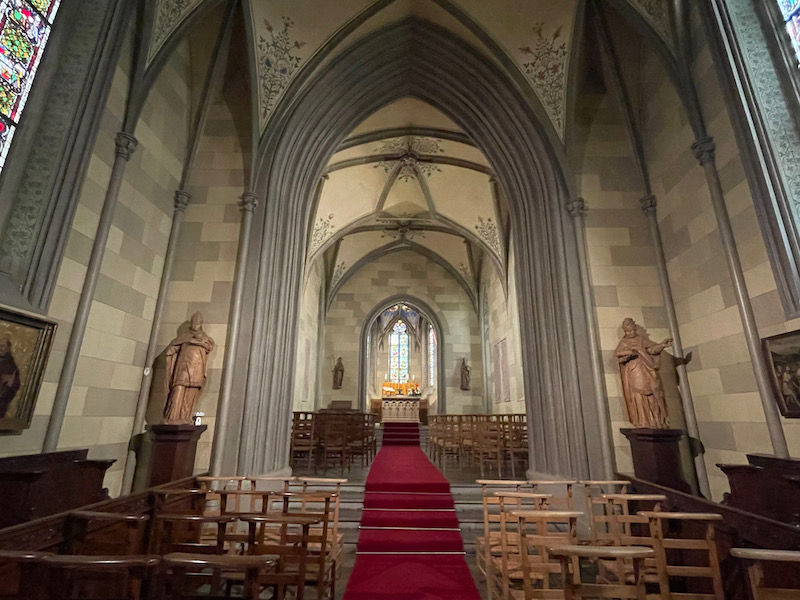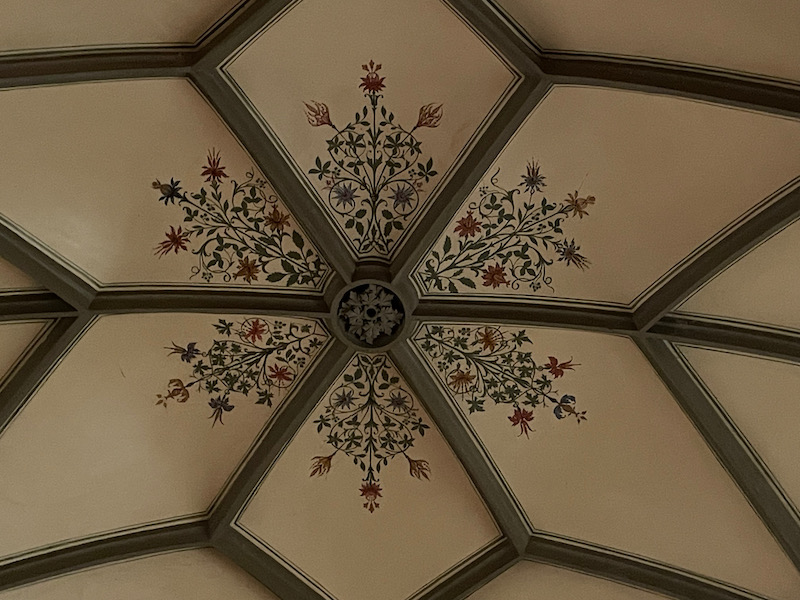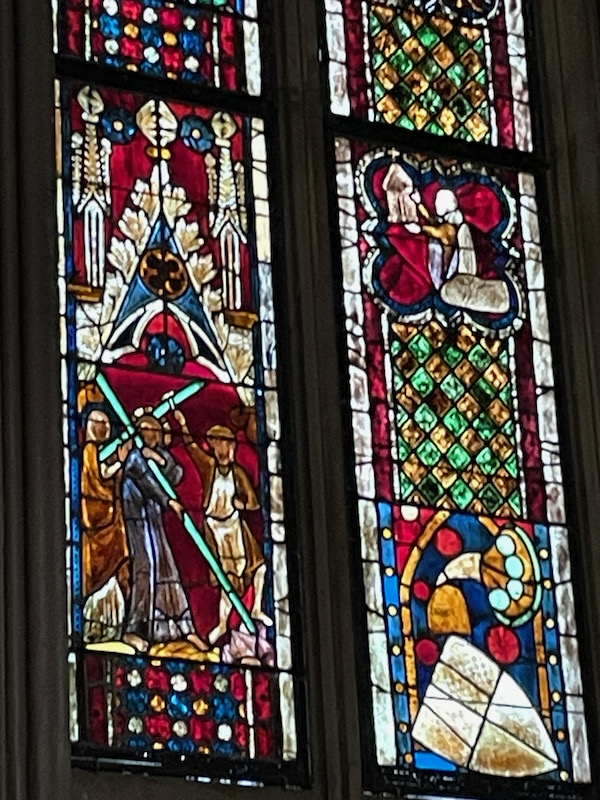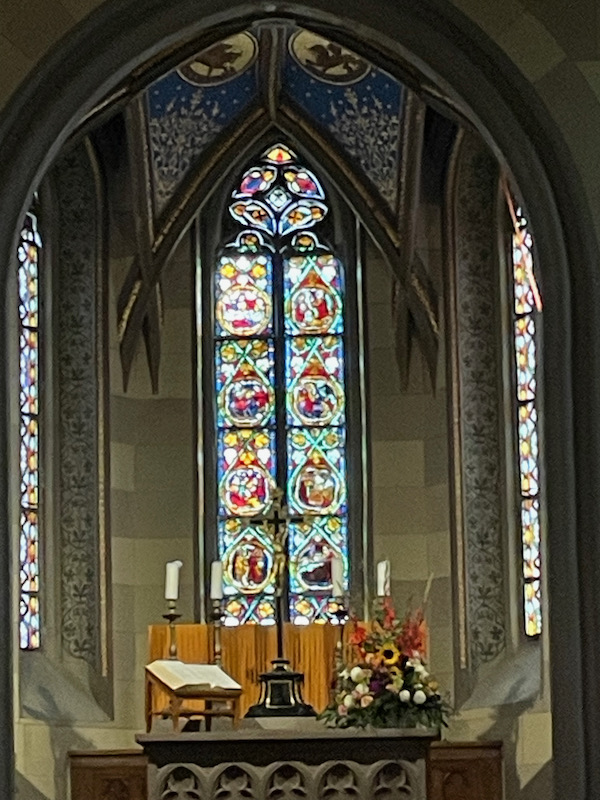Our Blog - Germany 2023 - Hohenzollern Castle, Bisingen, Germany
The first Hohenzollern Castle was built in the early 11th century as the seat of the imperial House of Hohenzollern. Over the years, this house split several times and the castle remained in the Swabian branch. That 11th century castle was completely destroyed in 1423 after a 10-month siege. Another castle, larger and sturdier than the first one, was constructed from 1454 to 1461. During the Thirty Years War, it served as a refuge for the Swabian Hohenzollerns, who were Catholic. By the end of the 18th century, it fell into disrepair and several buildings were demolished.
This is the 3rd castle, started in 1850 by King Frederick William IV of Prussia and completed in 1867 under Frederick William IV's brother King William I. However, none of the Hohenzollern family lived there when it was completed. In 1945 it briefly became the home of the former Crown Prince Wilhelm of Germany, son of the last Hohenzollern monarch, Kaiser Wilhelm II. A bit of trivia: it is one of the most visited castles in Germany.
We did a tour of the various rooms, which was done really nicely with a detailed app on the phone. We did it in pieces since Lucy could walk around the courtyard but not go into the various rooms. So I would do one section and Tom would stay with Lucy, then we would switch, and then switch again, etc.
Here you can get an idea of how high it is ... perched literally at the top of a tall hill. Sorry for the less-than-ideal pictures but it was quite far away and quite cloudy and grey.
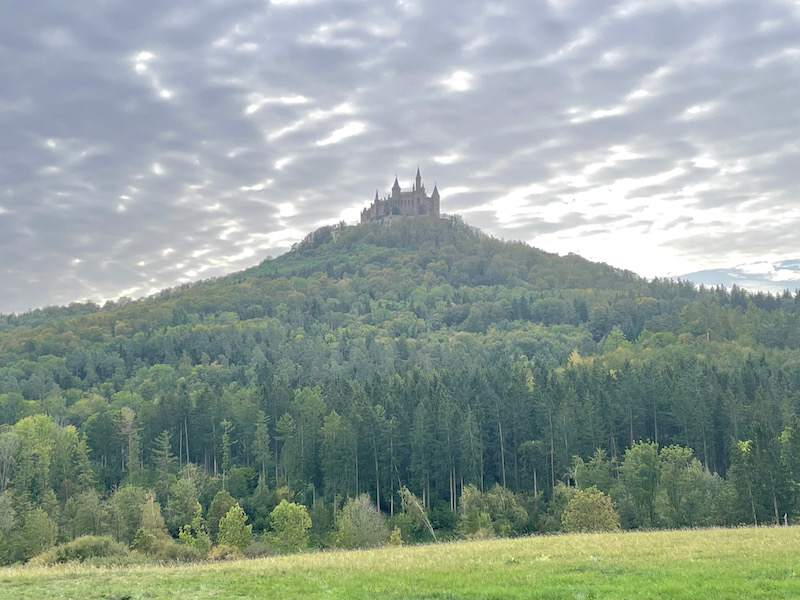
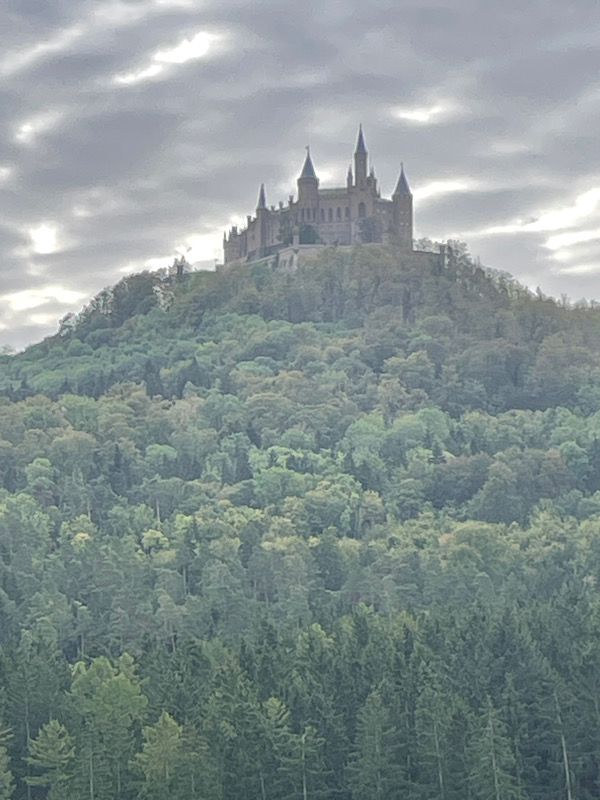
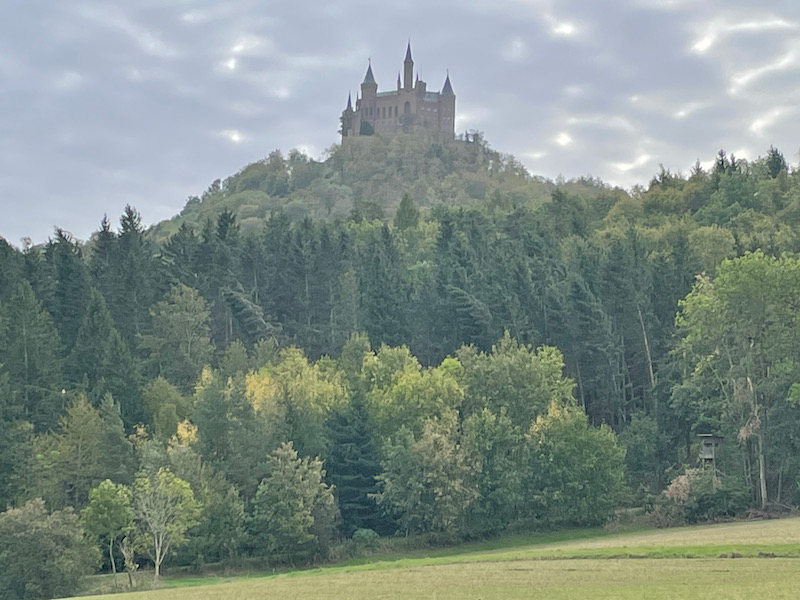
The Eagle Gate and its attached drawbridge form the entrance to the castle. From there, we walked around in circles, literally. The entry road makes 4 circles as it goes up from the Eagle gate to the rest of the buildings.
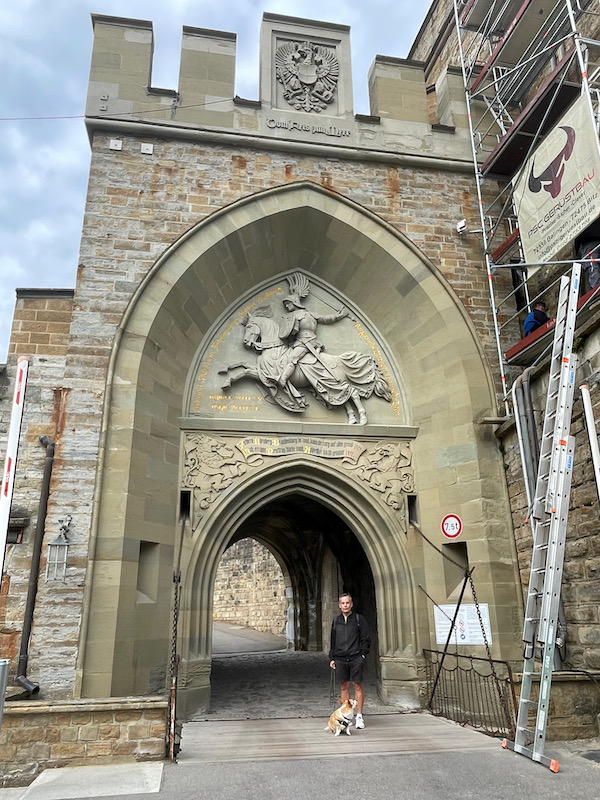
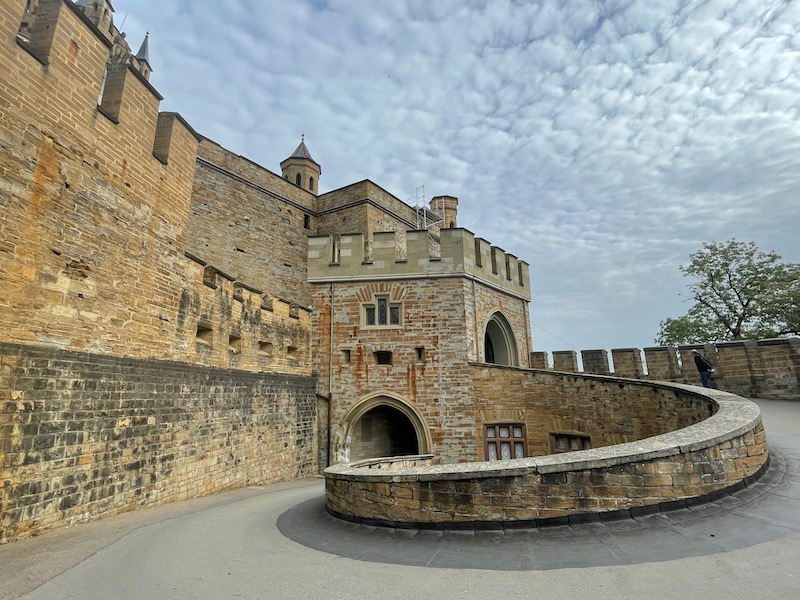
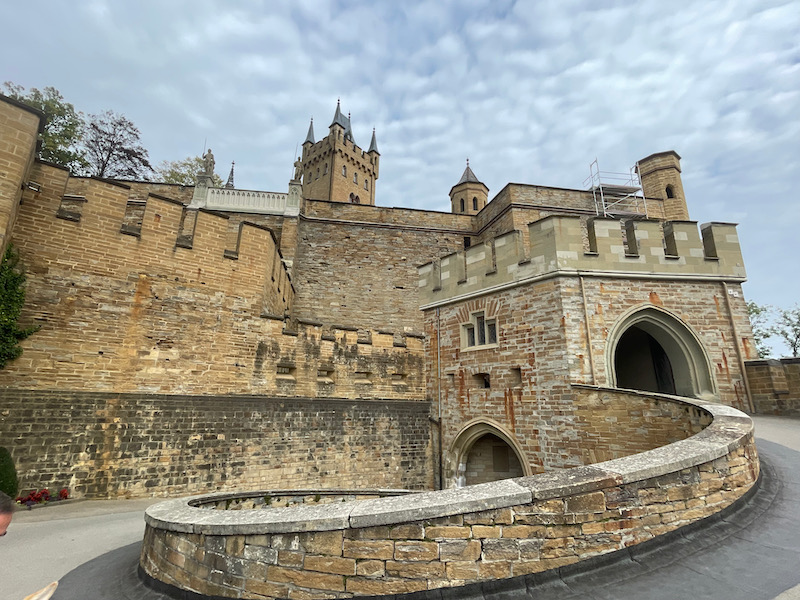
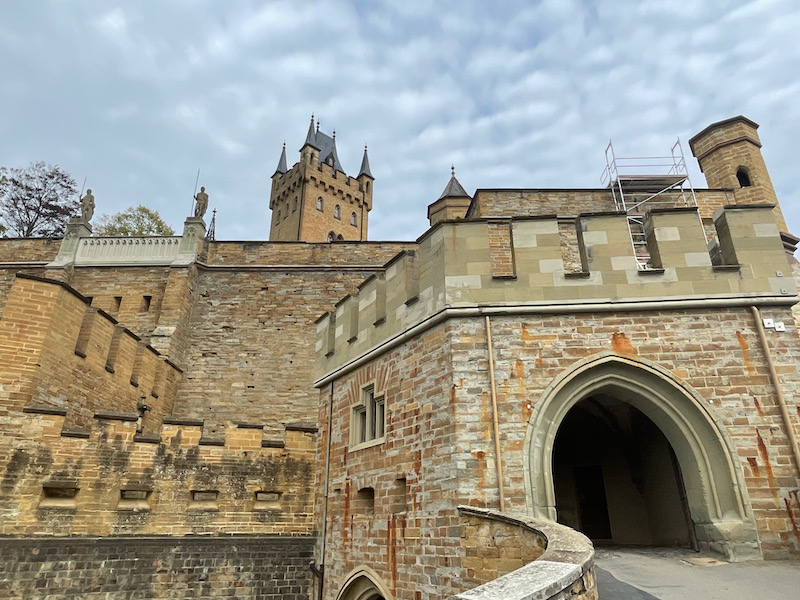
At one level, we could walk out around part of the castle and you can get an idea of how tall the buildings are. We also got a great view from there out over the countryside. In a couple of the pictures, you can see some of the defensive walls.
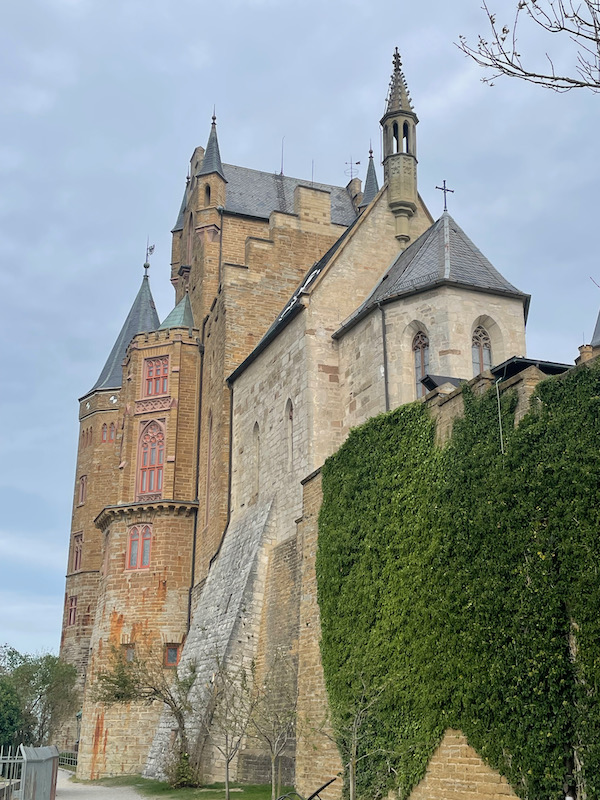
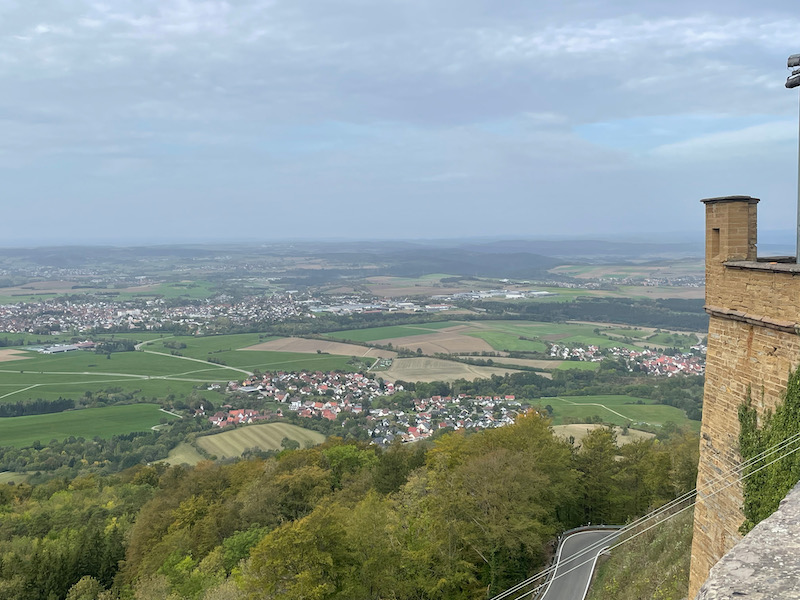
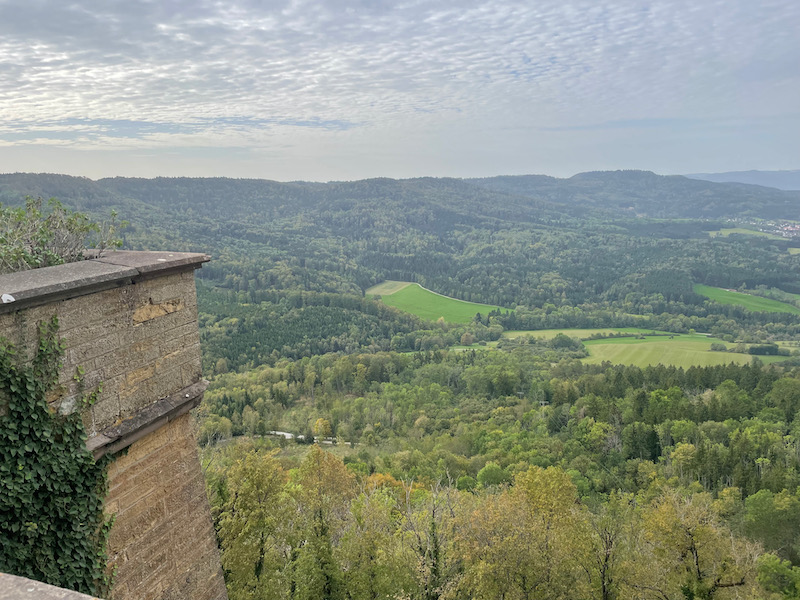
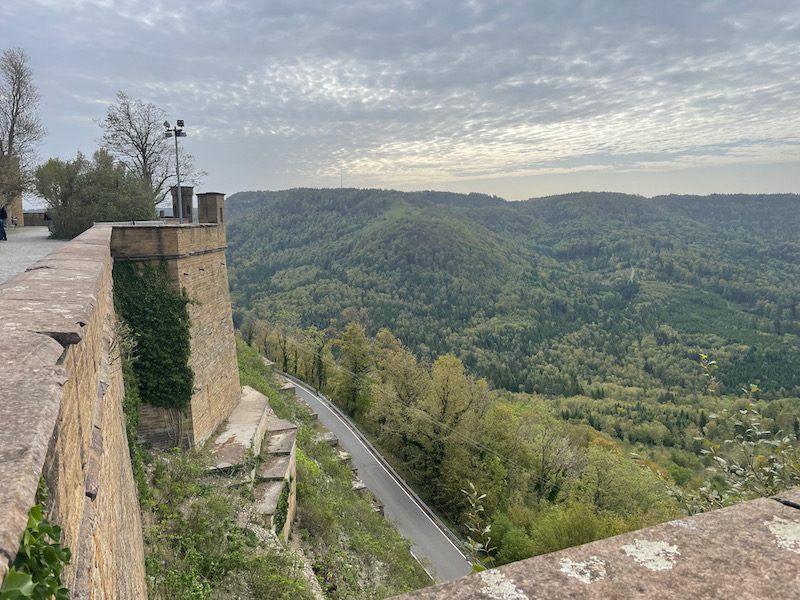
A little windy up there although Lucy doesn't seem to mind!
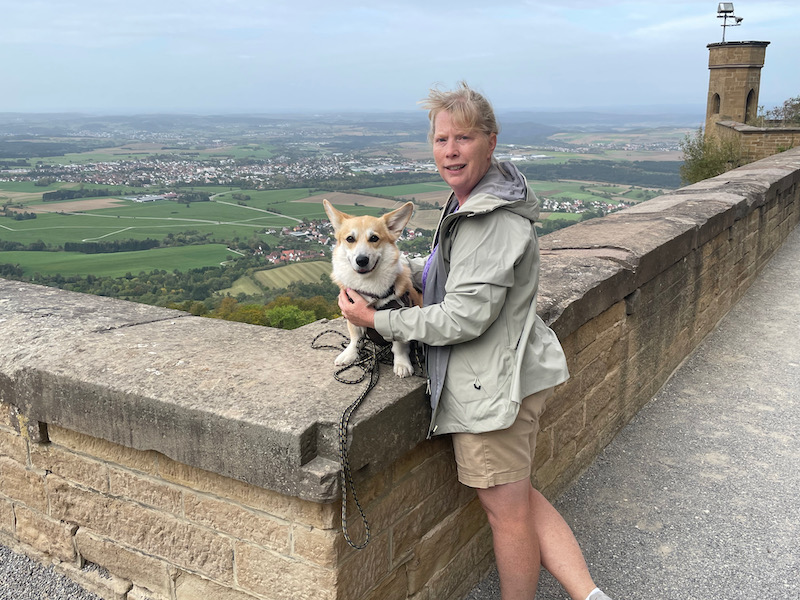
At this lower level, there are statues of 3 of the Prussian kings that were part of the family: King Friedrich Wilhelm III (1797-1840), King Friedrich Wilhelm IV (1840-1861), and Kaiser Wilhelm I (1861-1888).
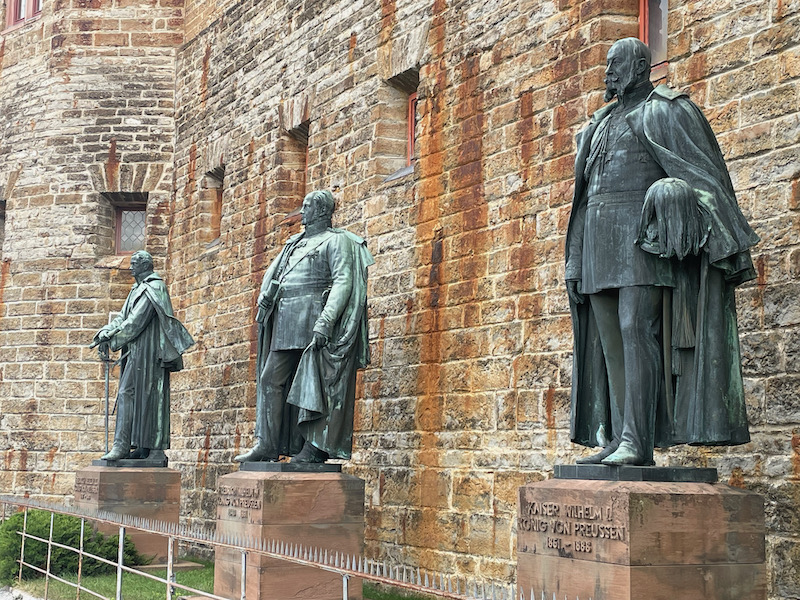
And the final square upper gate tower leads directly into the courtyard of the complex. I assume this is the coat-of-arms of the family although I couldn't find anything that would indicate that.
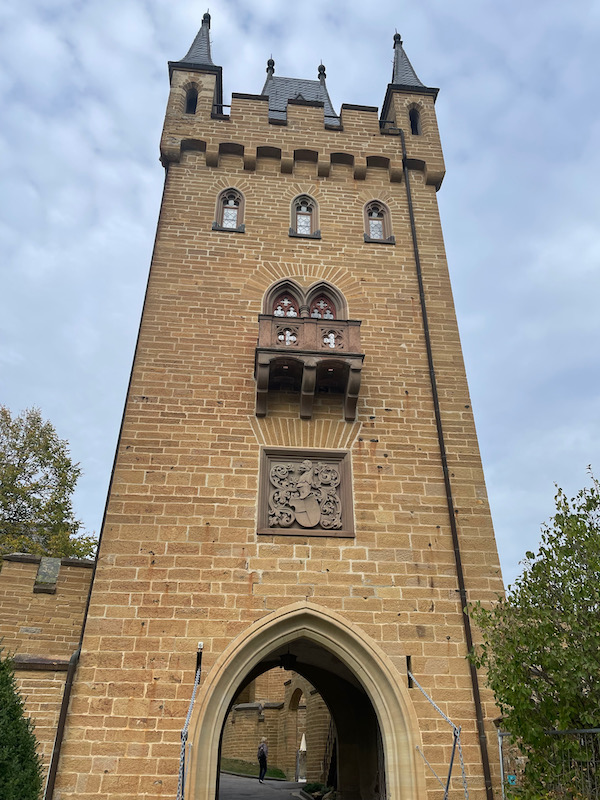
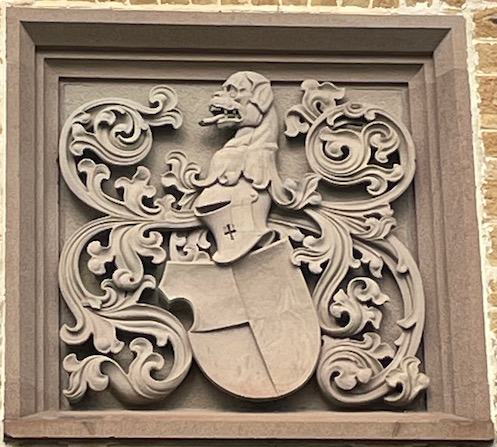
While Lucy wasn't allowed inside the various rooms of the castle, they did provide a nice "HundeBistro".
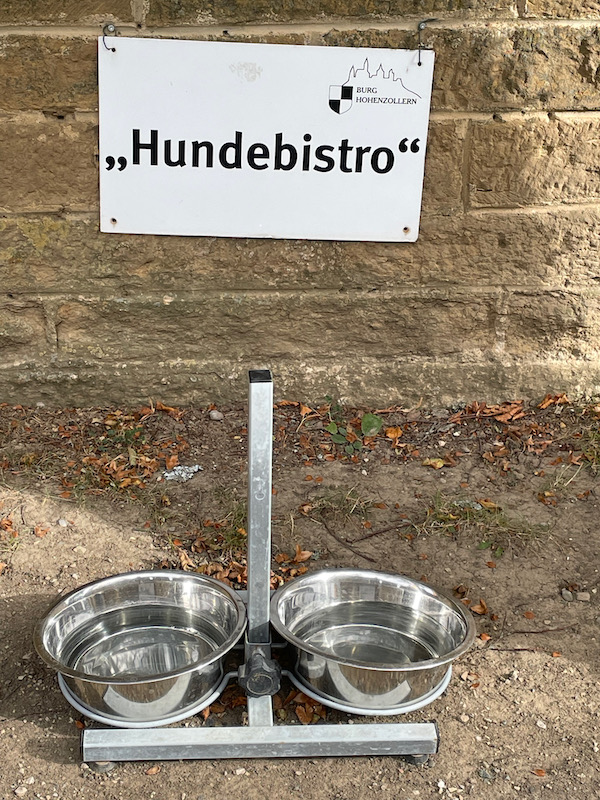
The castle buildings form a "U" with chapels on both ends. I tried to do pictures that would "swing around" left to right, starting with one chapel, through the rest of the castle, and ending with the other chapel.
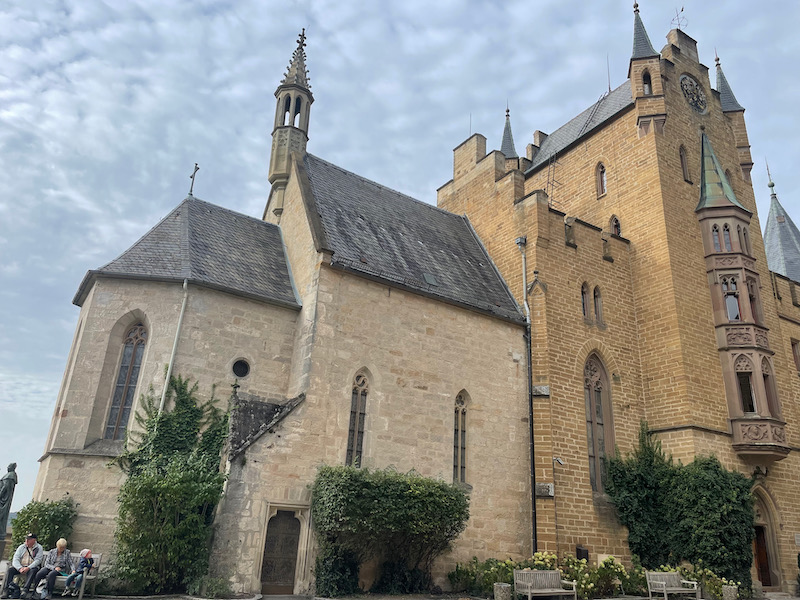
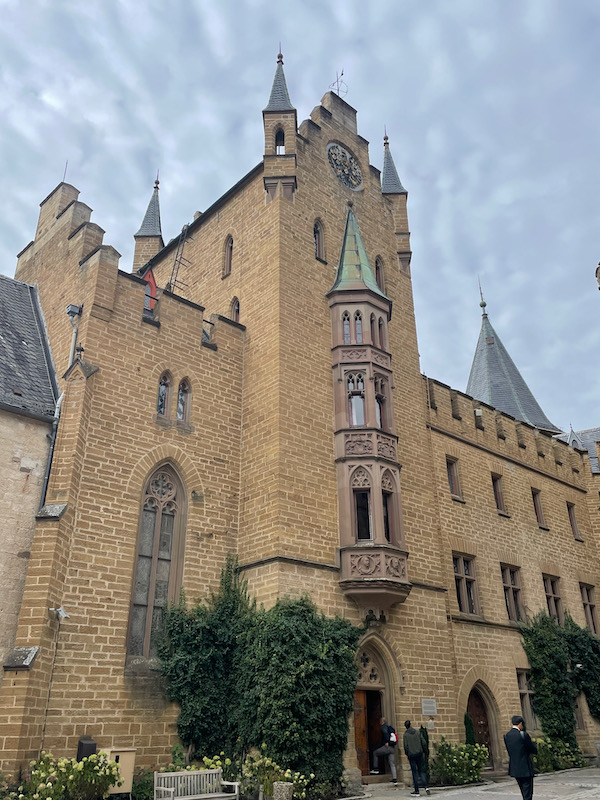
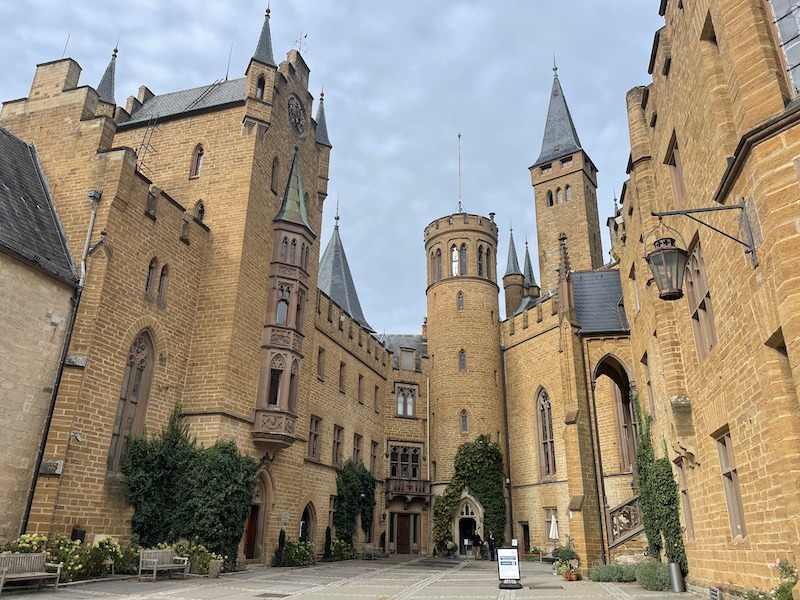
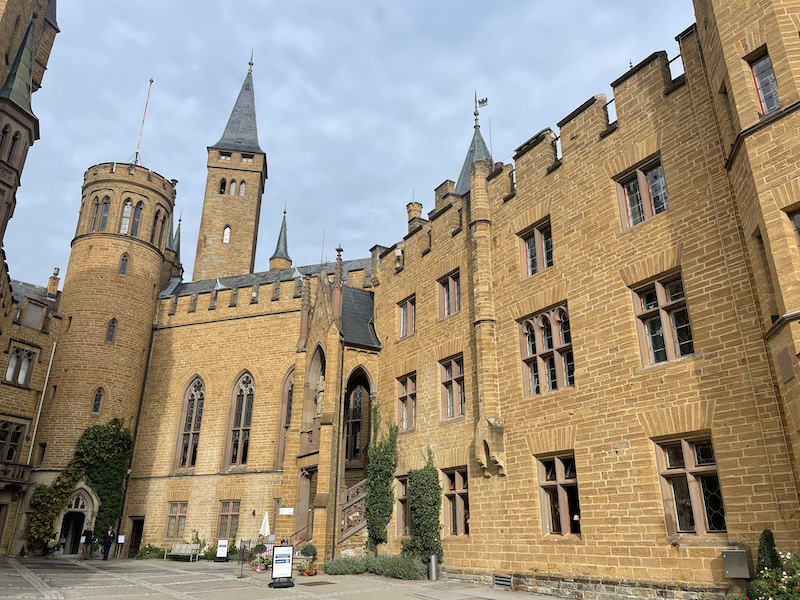
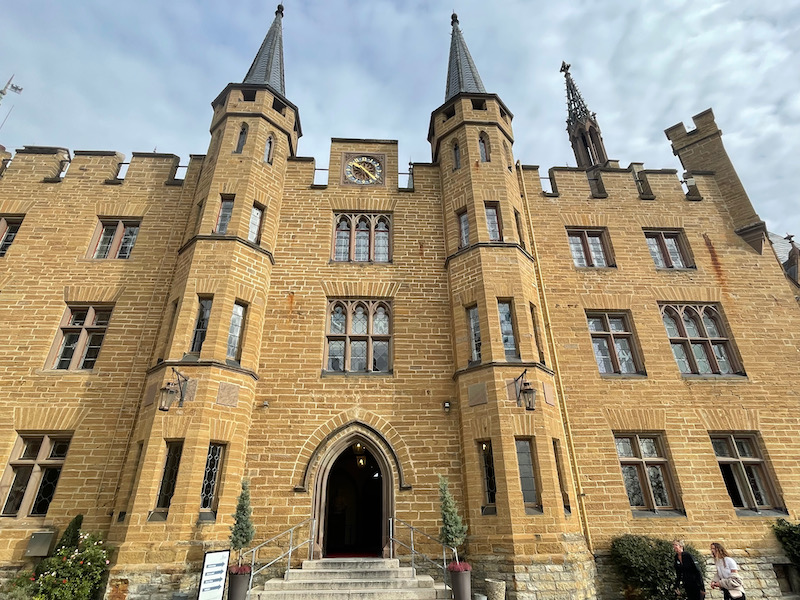
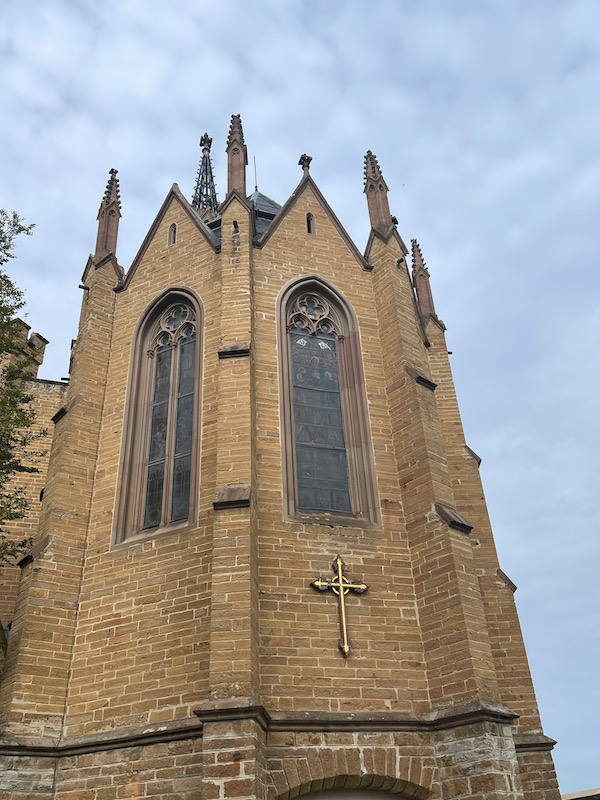
A few detailed pictures. The center stair tower and then the lovely balcony to the left.
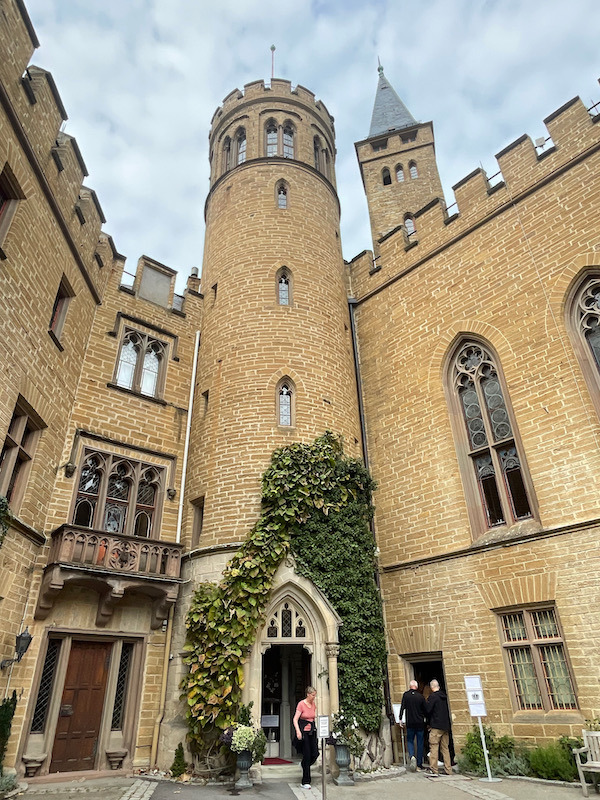
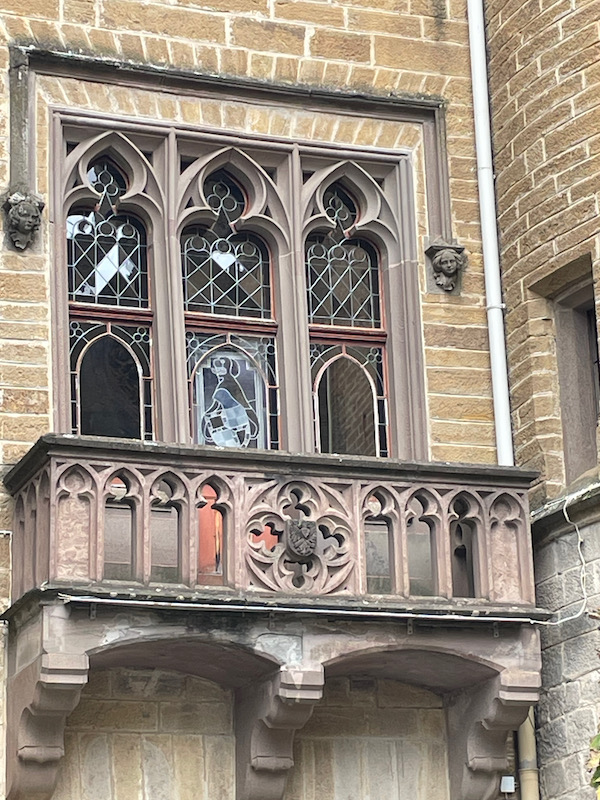
Main entry with a statue of Josbst-Nikolas I von Hohenzollern, who was the Count of Hohenzollern from 1439 to 1488.
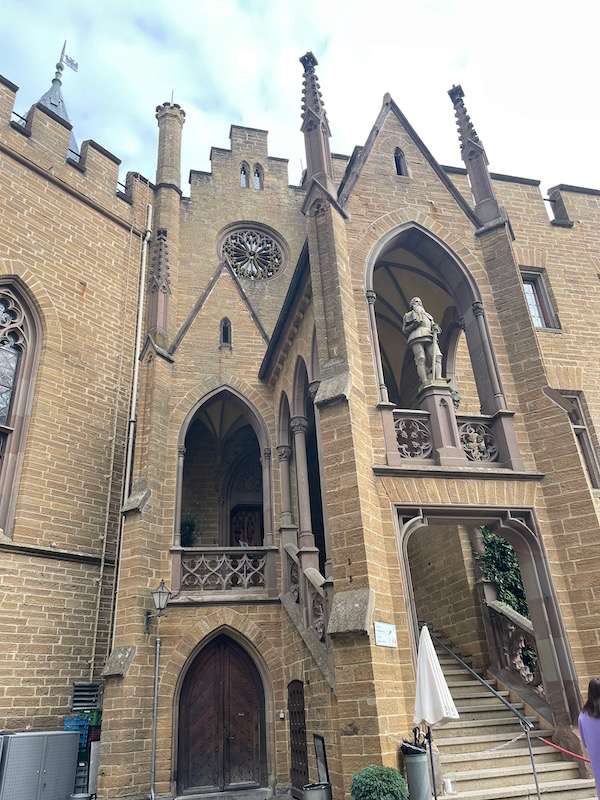
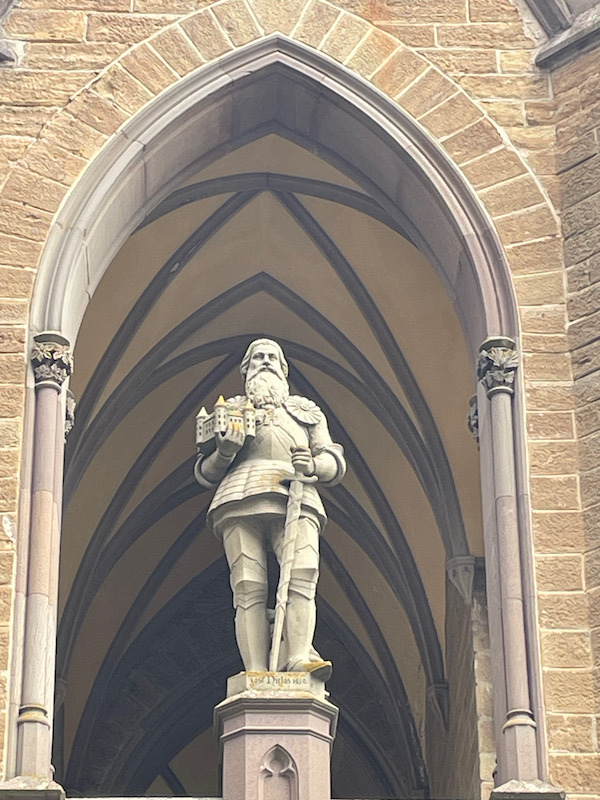
And now between the tower and the entry with the statue, you can see what looks like chapel windows. These, in fact, are the windows of the banquet hall, which I mentioned was designed like a chapel, complete with this type of windows.
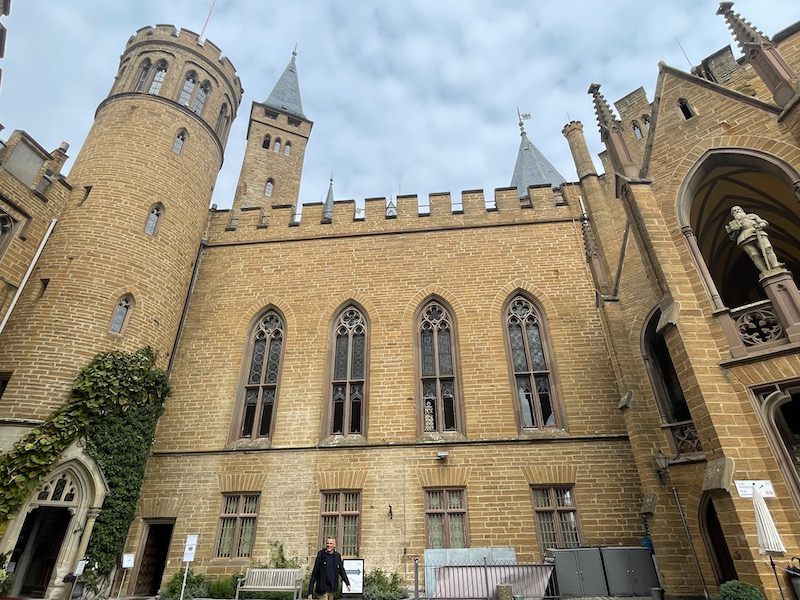
There are, in fact, 3 chapels at the castle for 3 different Christian denominations. The visit took us through 2 of the 3. We started on the right-hand side with the Protestant "Christ Chapel". It is quite Gothic in nature, with the Gothic windows and ribbed vaults. The stained-glass windows illustrate the birth, crucifixion and resurrection, along with the 12 apostles. For about 40 years, the coffins of Frederick the Great and his father, Frederick Wilhelm I, were here (between 1953 and 1991). They had previously been buried in Potsdam but they were moved into a salt mine during WWII for safety. After WWII, they were put here in the castle until the reunification of Germany, and then they were moved back to Potsdam. Below the Christ Chapel is Russian Orthodox Resurrection Chapel, which is not open to the public. This was added in the second half of the 20th century by Prince Louis Ferdinand of Prussia for his wife Kira of Russia. They were both entombed here, along with other family members, after her death in 1967.
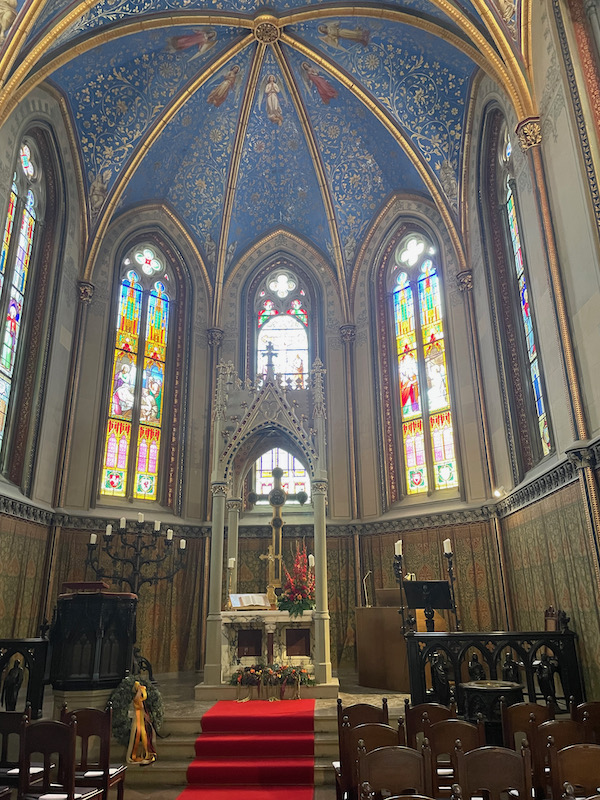
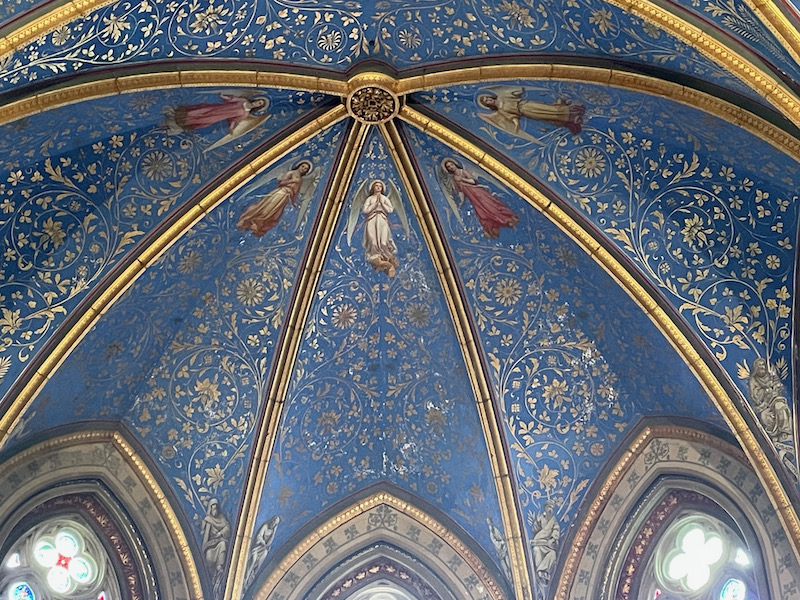
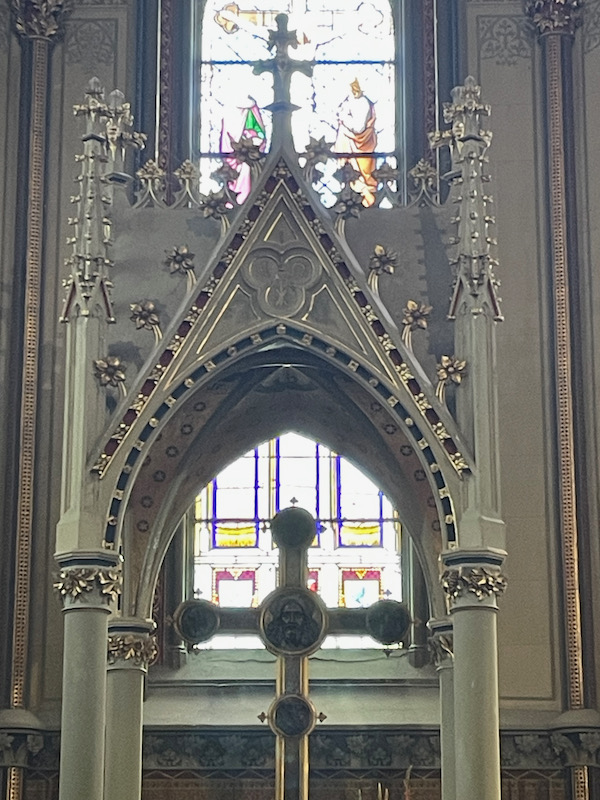
We entered through the Ancestral Hall, which leads to the banquet hall and royal apartments. The walls are decorated with the family tree of the Hohenzollern dynasty. The doors are pretty impressive, both the carved wooden exterior door and the wood with gold door that leads to the banquet hall.
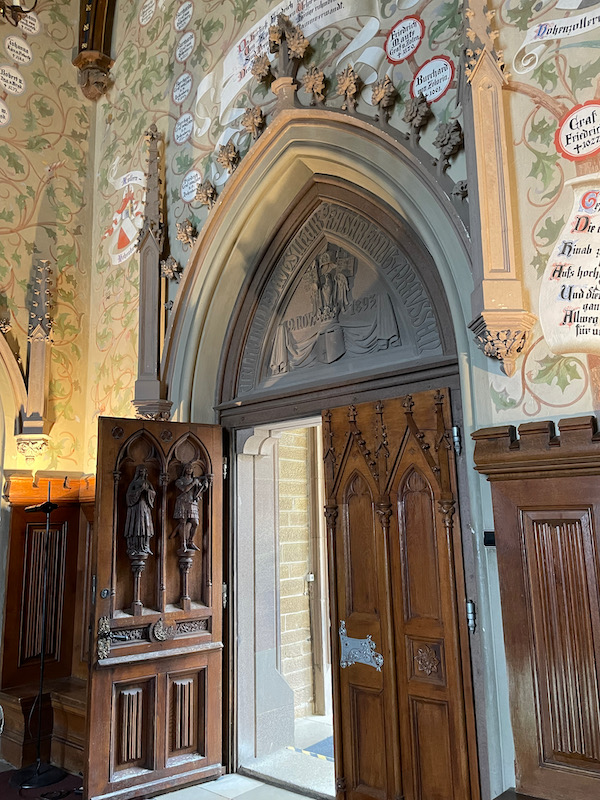
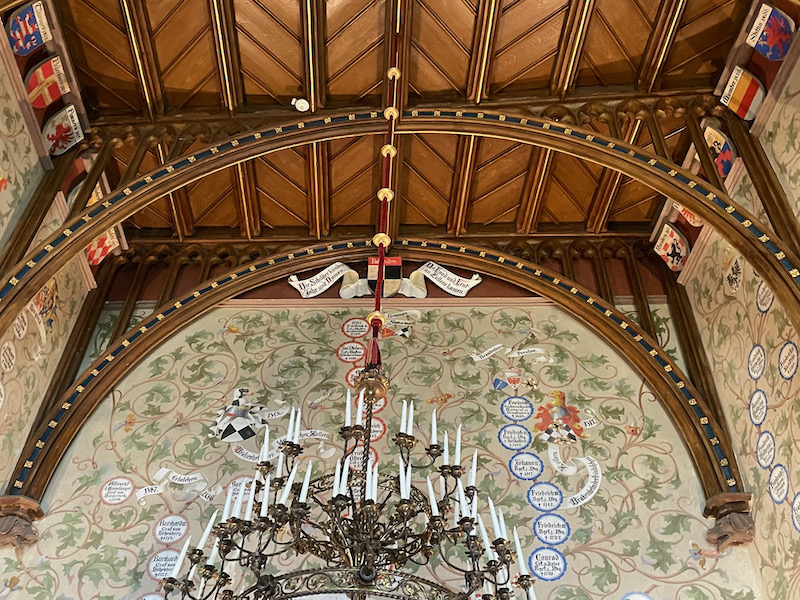
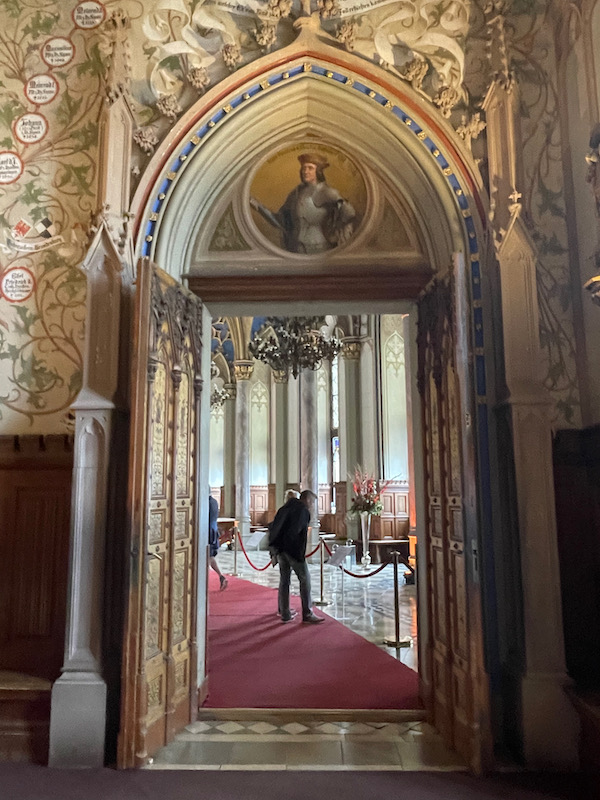
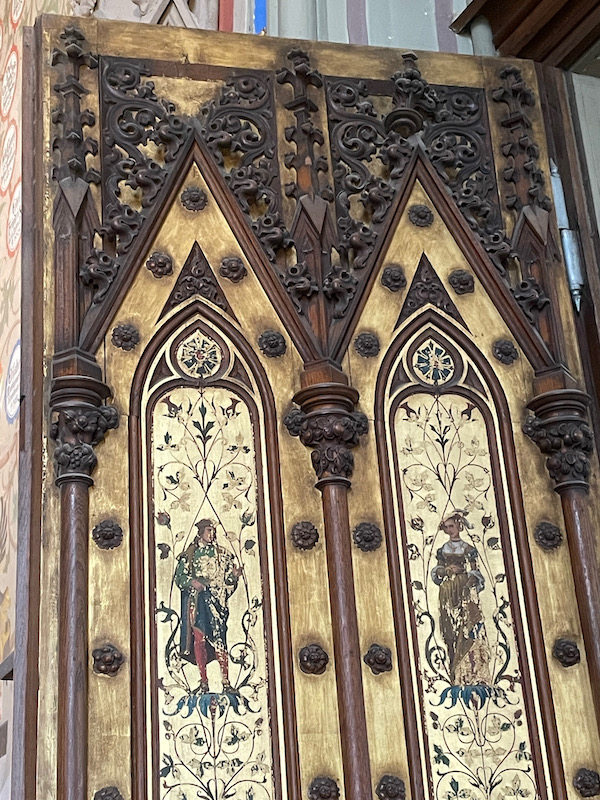
The banquet hall and ballroom, called the Count's Hall, are designed to resemble a 3-nave church, complete with Gothic ribbed vaults. It was inspired by the Saint Chapelle in Paris. Above the fireplace are weapons that were collected by the family, mostly by Fredrick Wilhelm IV. At one end is the Emperor's Hall, a little round room with 3 statues of Holy Roman Empire rulers.
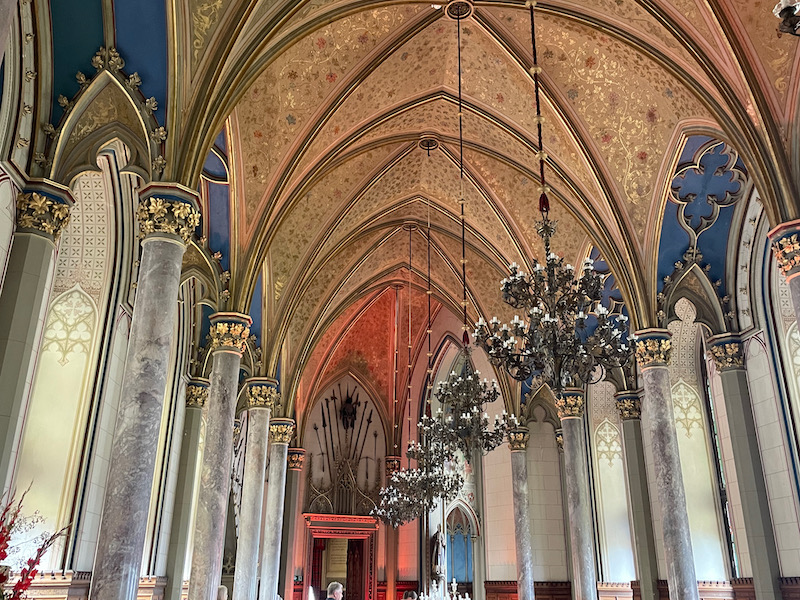
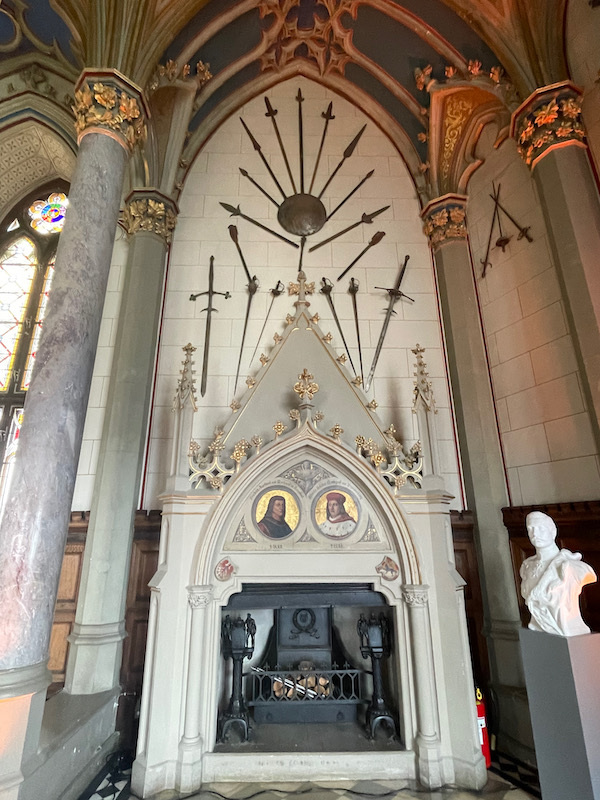
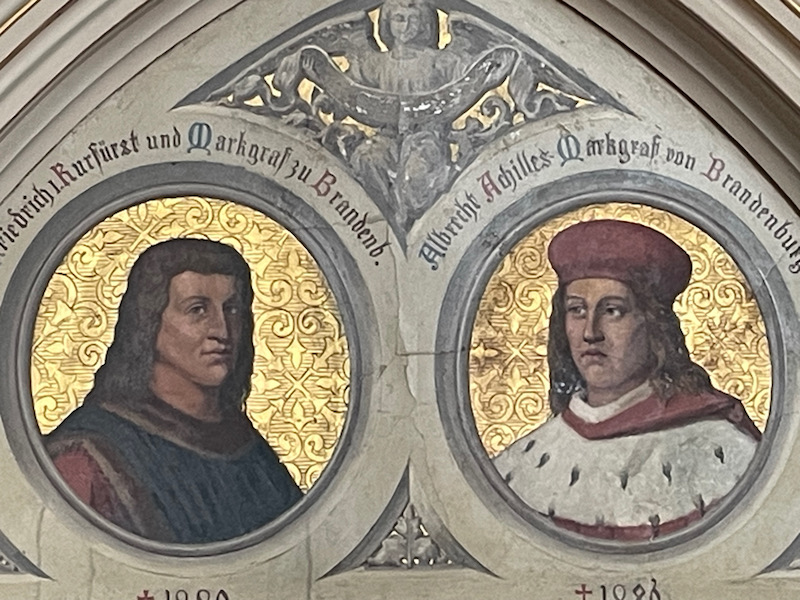
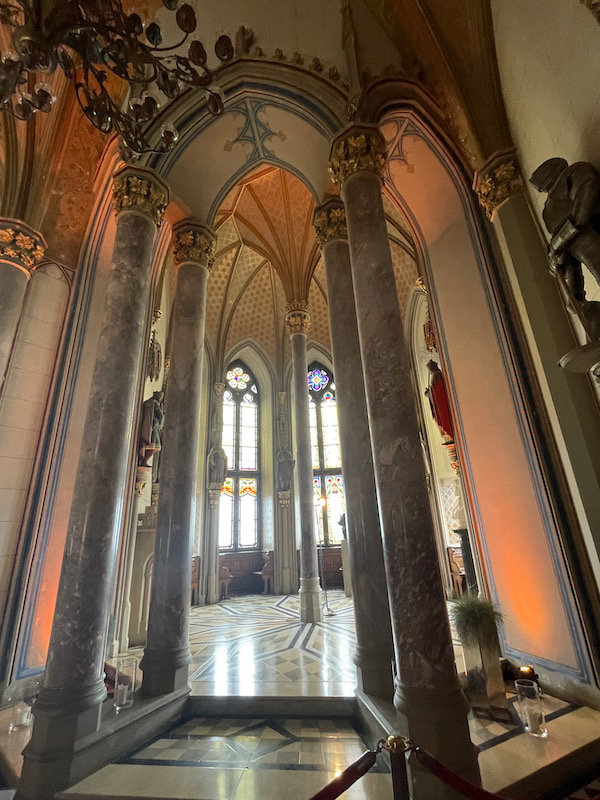
The Library is a long gallery that connects the formal rooms with the private apartments. The paintings depict the history of the Hohenzollern Castle through the Middle Ages.
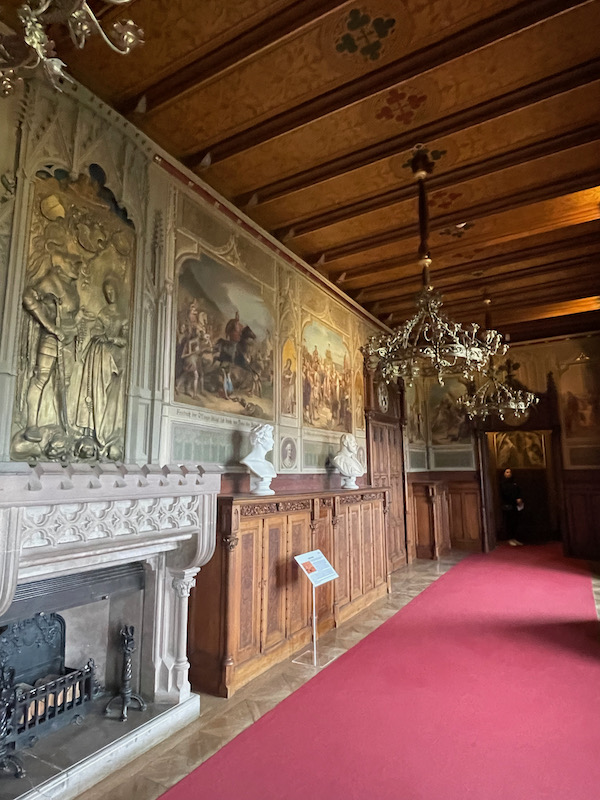
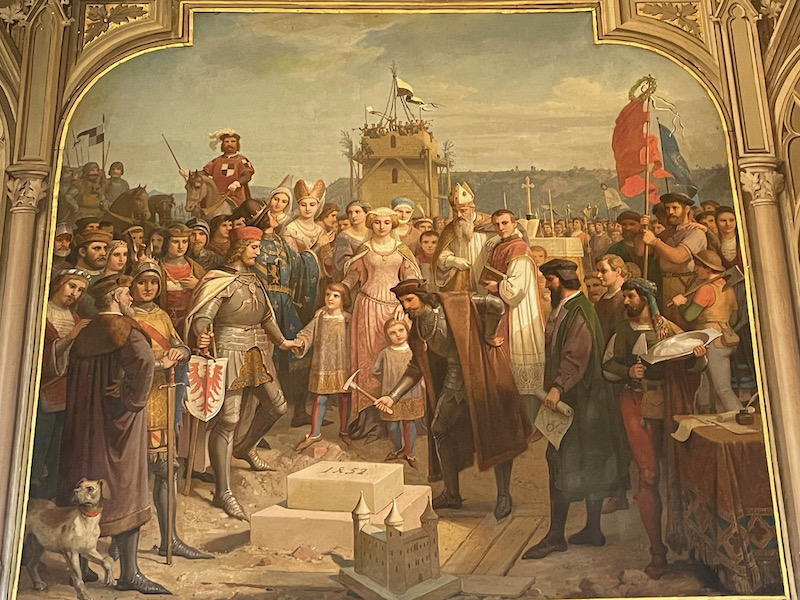
The living room and study of King Wilhelm I of Prussia is in one of the towers, hence the round shape. However, since the king rarely spent time in the castle, it was really never used for the intended purpose.
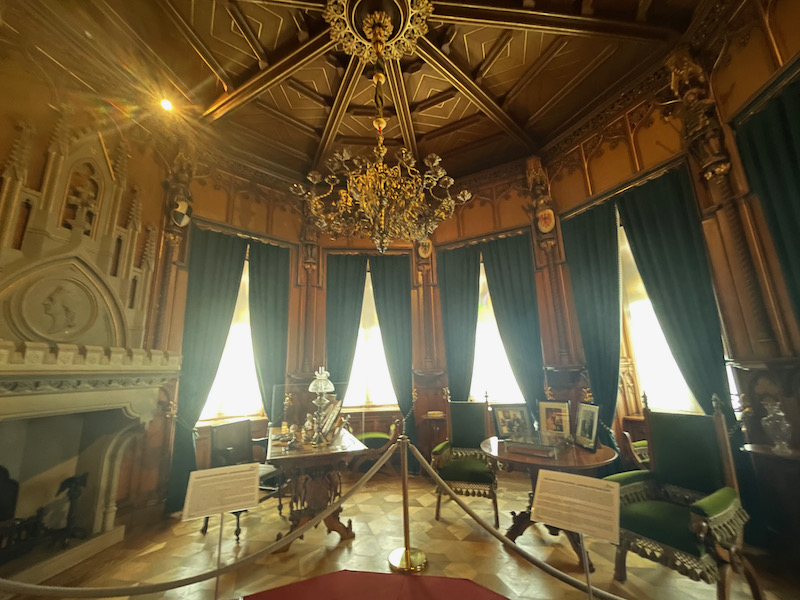
Next are the King's bedroom and the room of his valet. It is a fairly small room for a King, but it wasn't used very often, or for very long, since the castle wasn't really a full-time residence.
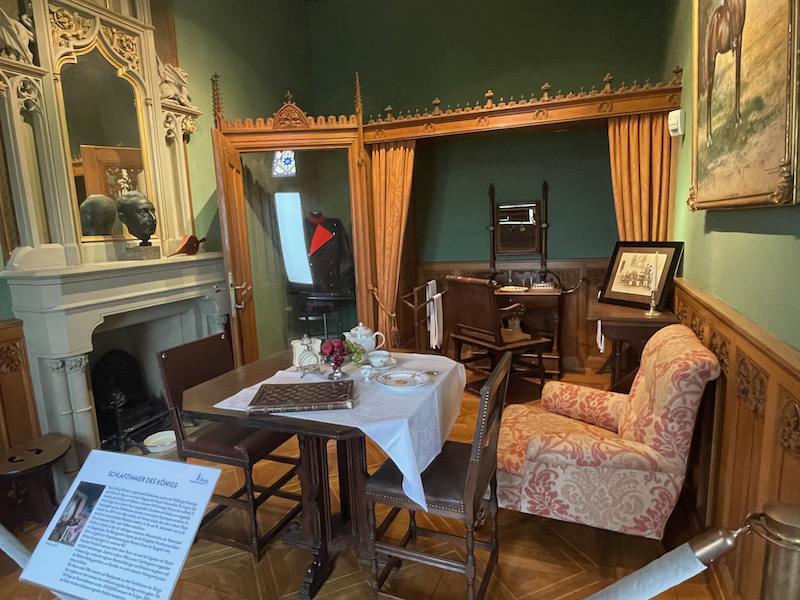

The next few rooms are for the Queen, and most of the furniture is original. You can see the various portraits on the wall, and then the next picture is the detail of the ceiling, which I thought was very nice.
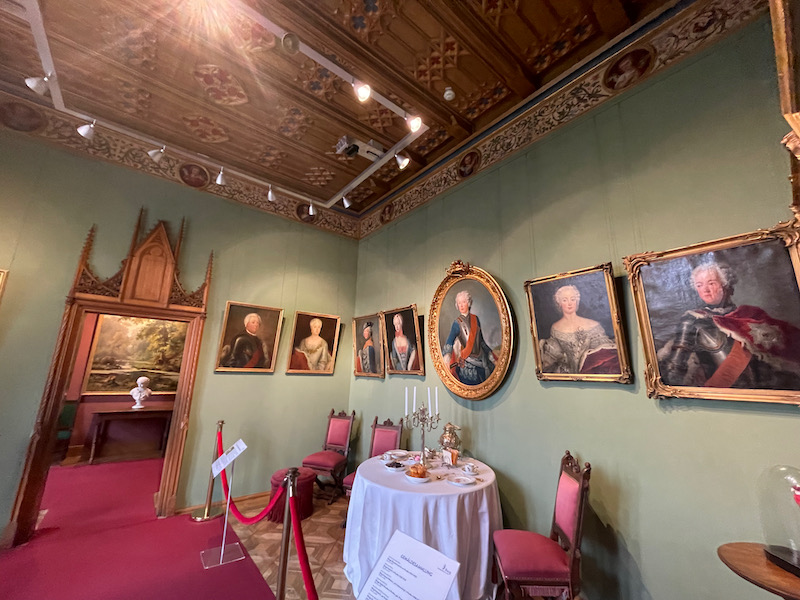
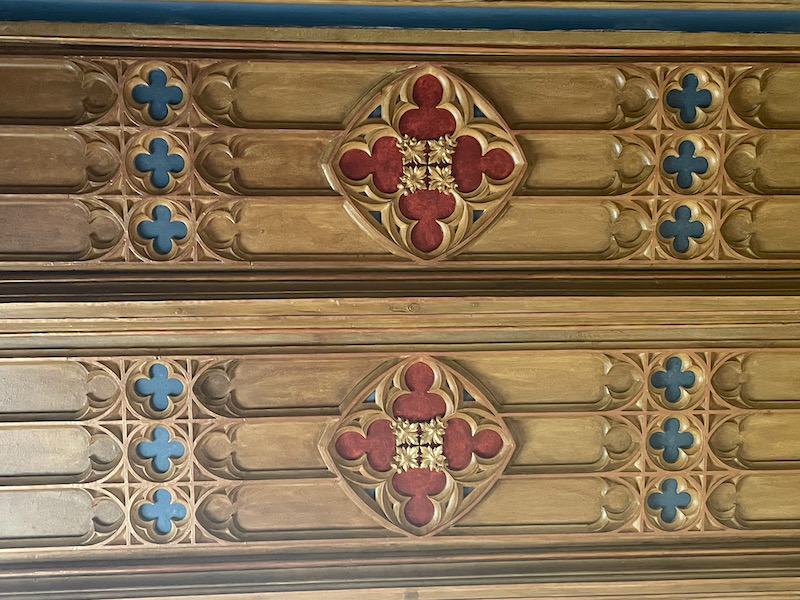
The Blue Parlor is the highlight of the Queen's apartment, which was used by Queen Augusta of Prussia (1811-1890). The floor is made up of 5 different types of wood and the ceiling is blue and gold.
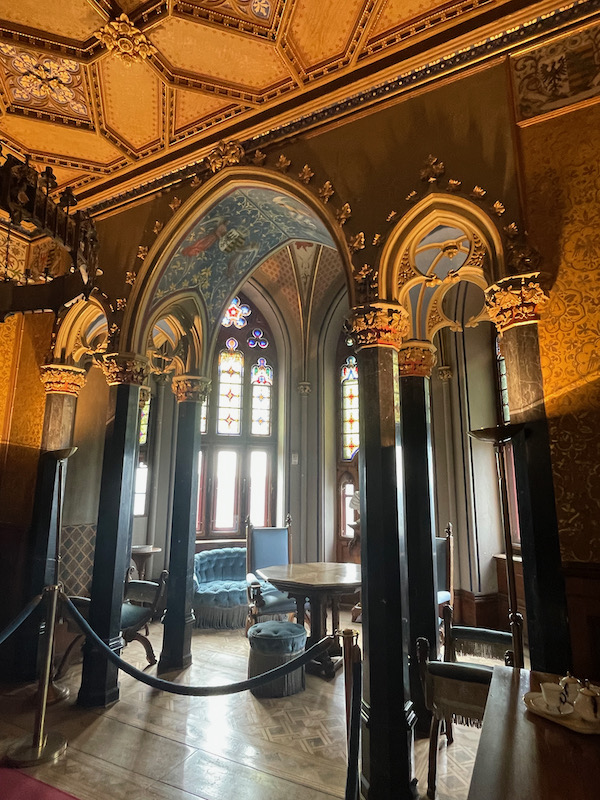
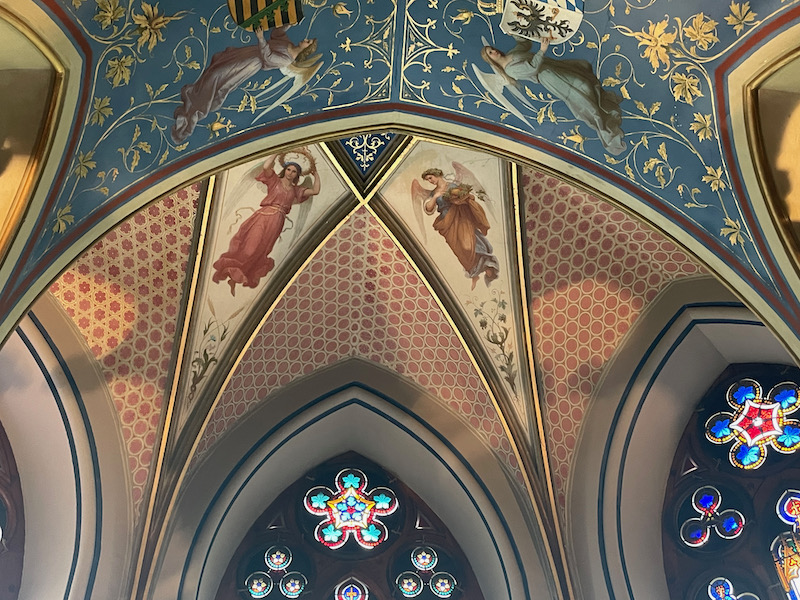


Up to the 2nd floor, and now we are in the apartments of the "Prince", which was used by a cousin of the King and his wife. Similar to the King and Queen's apartments, these were used only occasionally during visits. The wallpaper in the room of the Prince is modern but inspired by the original dark blue and gold colors of the room. The portraits are that of Prince Carl Anton of Hohenzollern Sigmaningen and his wife Josephine. Then the sitting room of his wife Josephine uses violet and yellow colors for relaxing in the afternoon. In a few of the rooms, starting here, there were examples of clothes that I assume were worn by the royal couple.
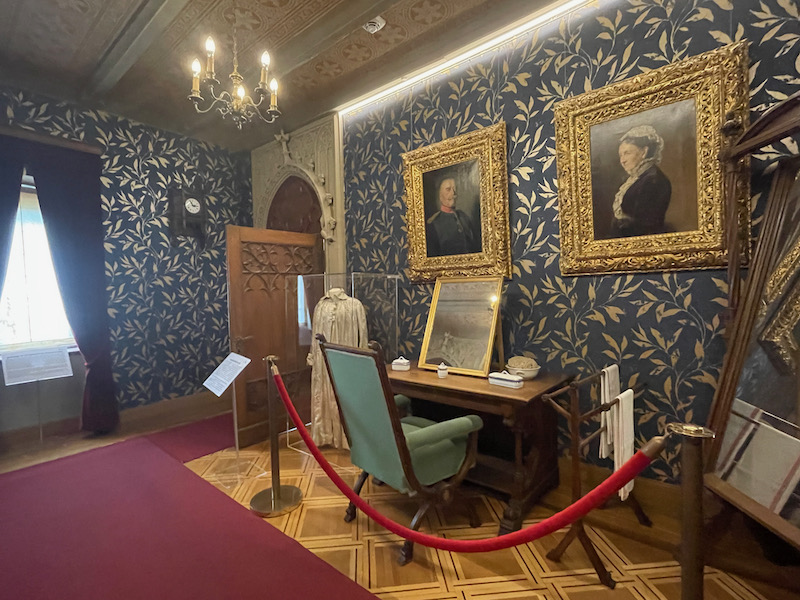

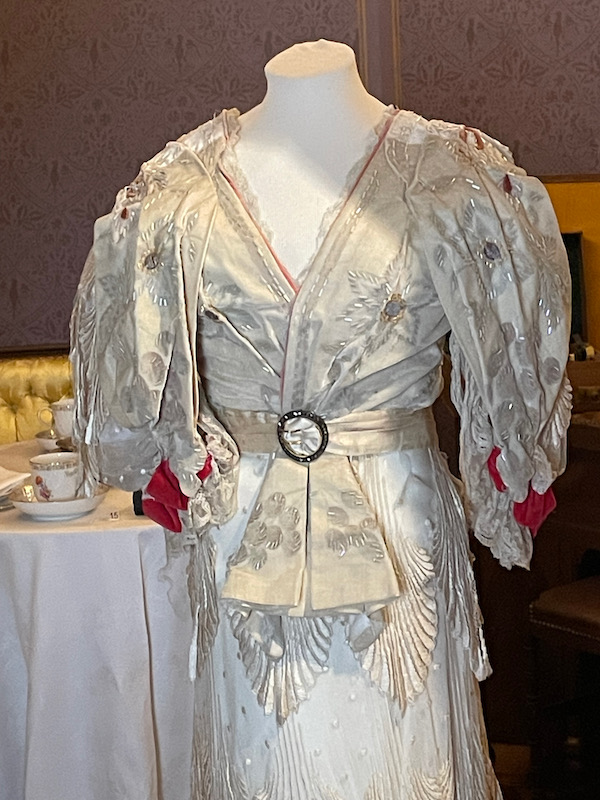
The round living room of the Princess, also within a round tower, has a darker color scheme and much more of a "formal" appearance. The ceiling shows the coats of arms from several estates within the House of Hohenzollern-Sigmaringen. The furniture has been preserved nicely. And while the colors are a little dark, you can also see that the tracery around the walls are quite delicate. Another intricate decoration is above the fireplace, with a bas-relief of Saint Michael the archangel.
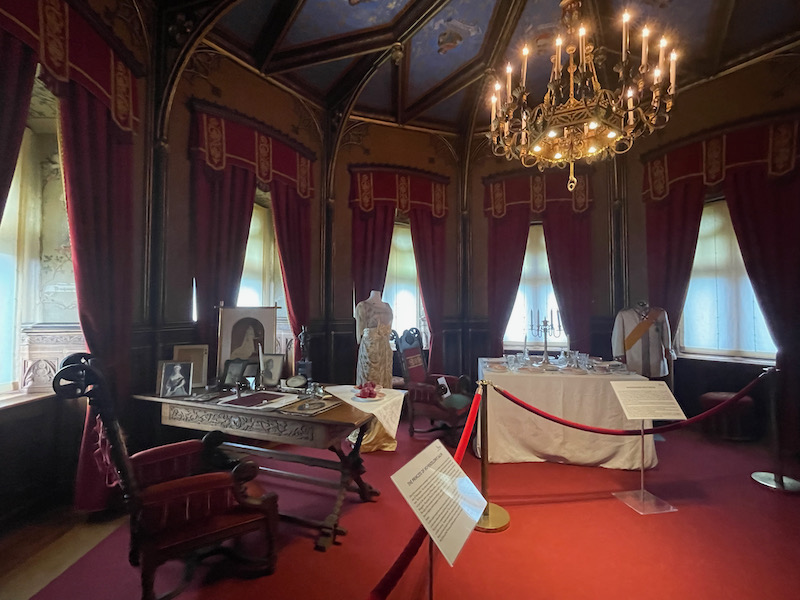
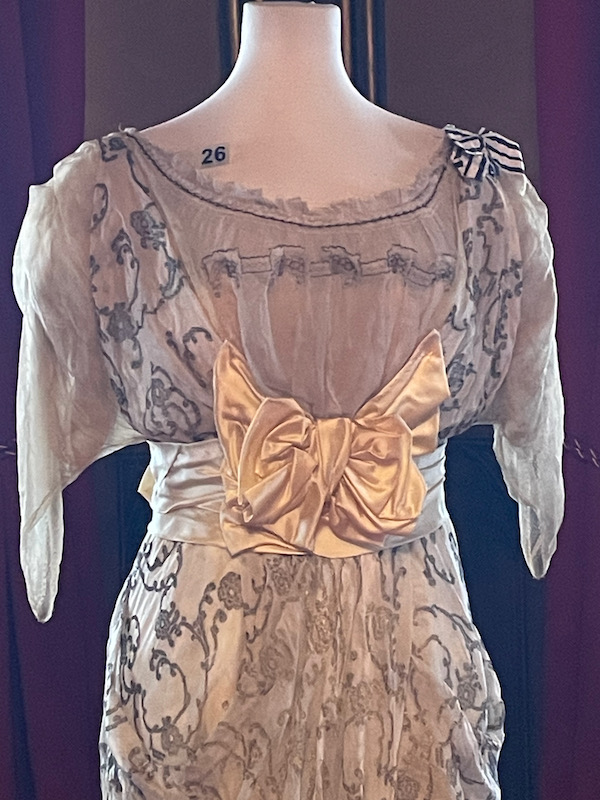
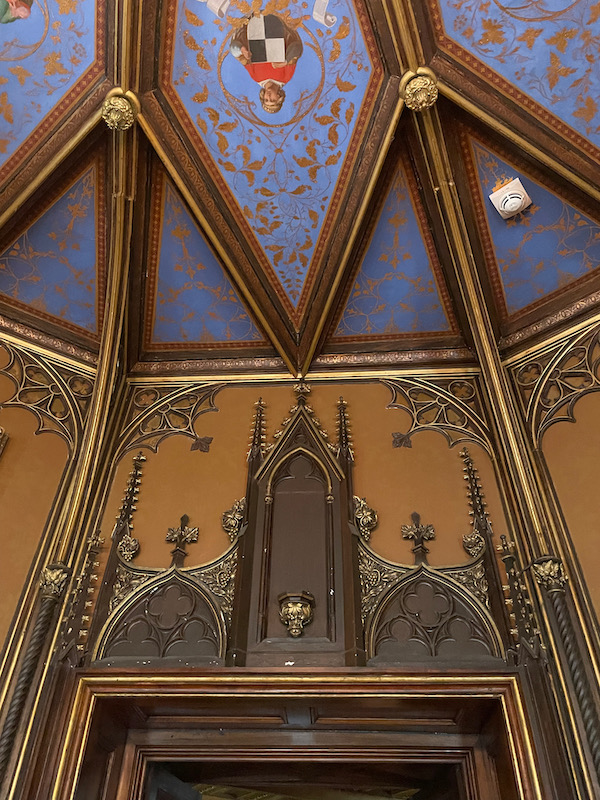
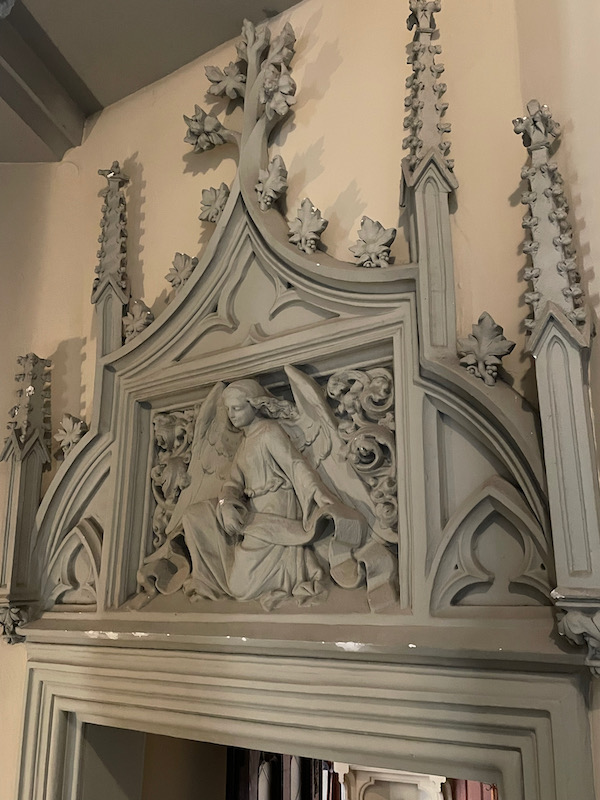
And then the last room in the castle, which is just a sitting room. Then we headed back down a spiral staircase.
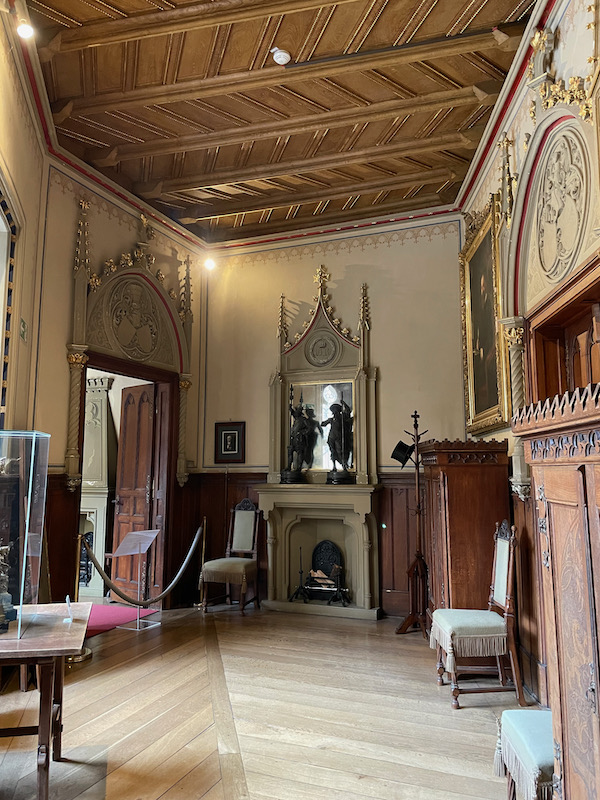
The castle also has a "casemate", which is basically a bomb shelter where the knights could go when the castle was under siege. Food supplies and munitions were also stored in these underground tunnels.

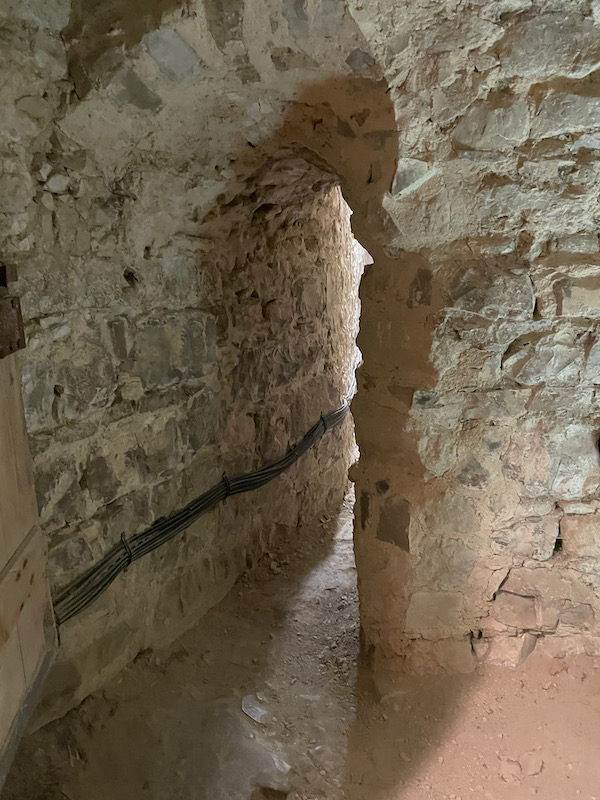
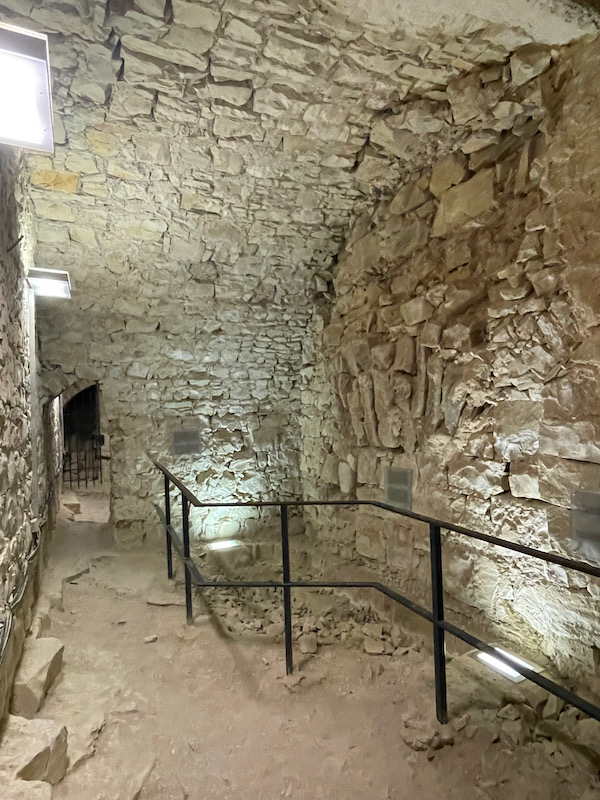
Not the best picture, but I grabbed one with Lucy and a cannon ... although I'm not happy with her ears being back.
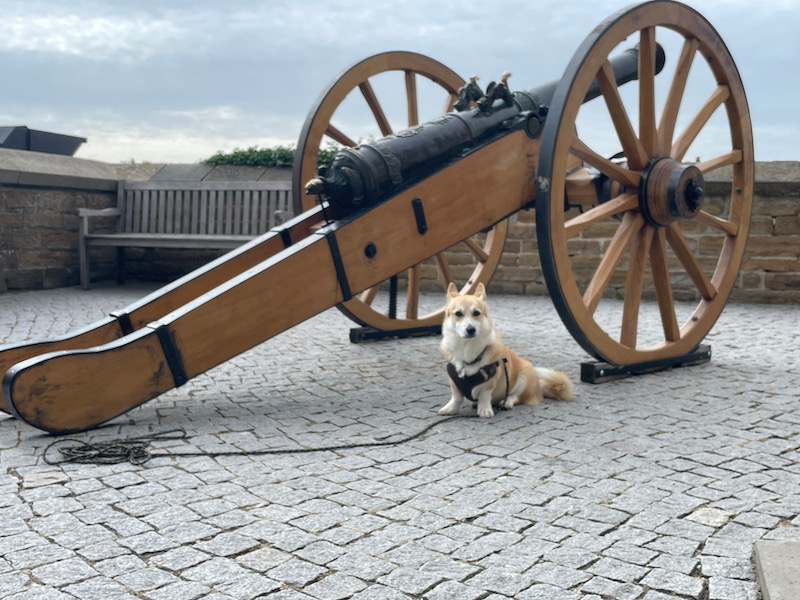
The origins of the Catholic St. Michael's Chapel dates back to 1454 and is, therefore, the only surviving structure of the second castle. It was expanded in 1853 to its current form. The nave and choir are covered with ribbed net vaults. A set of the windows, which were created between 1280 and 1290, came from the church of a former monastery that was previously been used as a family burial place. There is a small anti-chamber with some very nice windows and a large statue of Saint Michael killing the dragon.
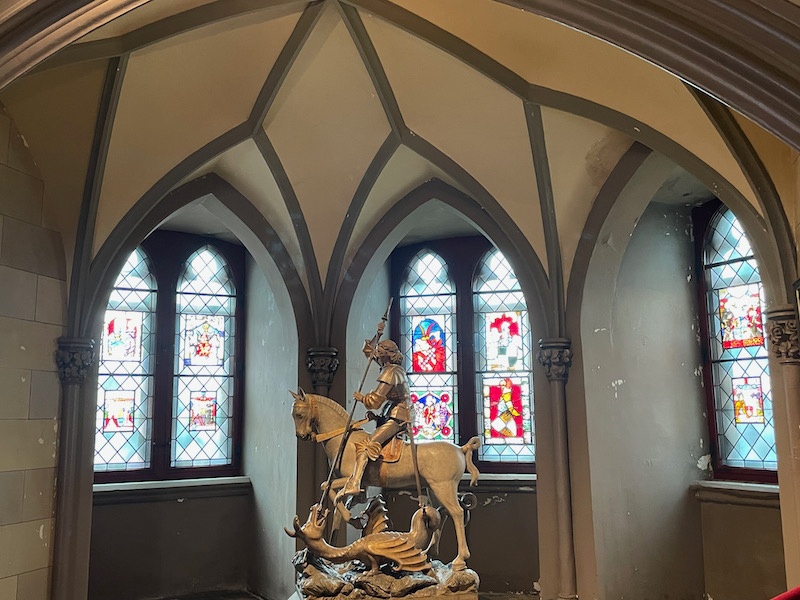
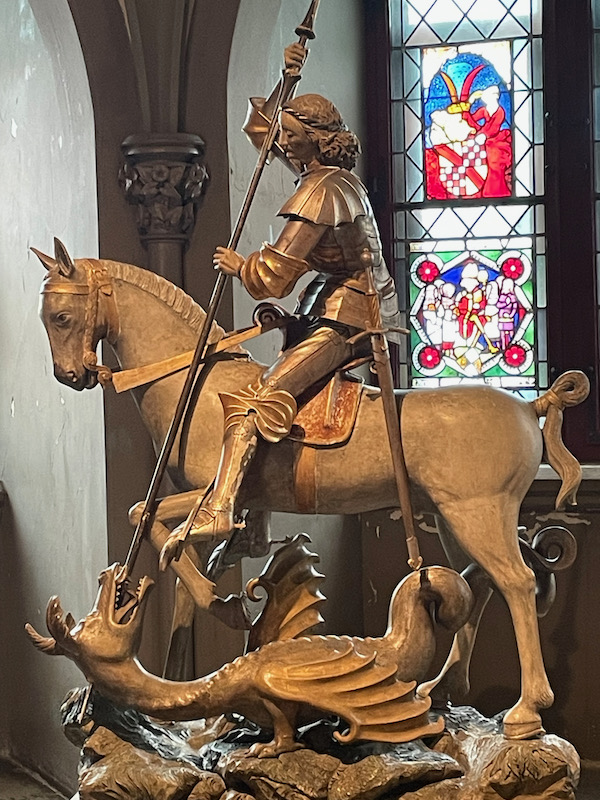
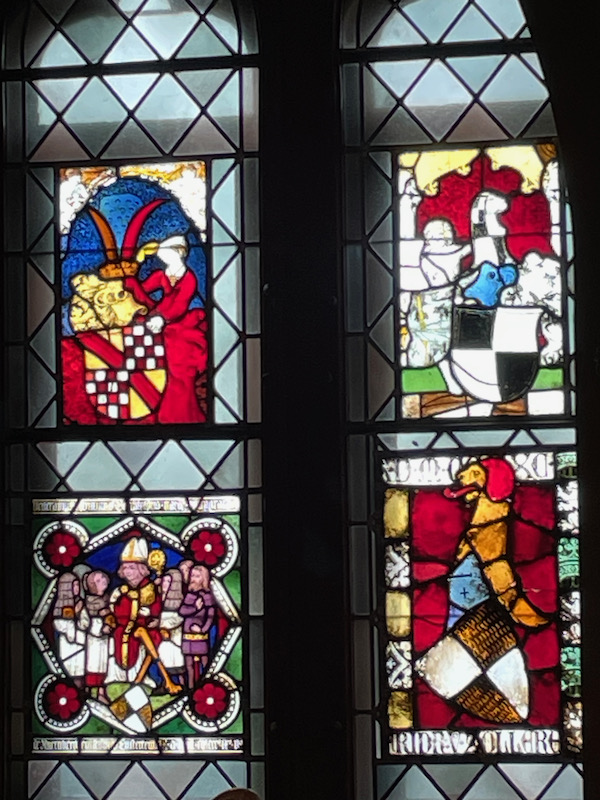
The chapel itself is a bit more simplistic, Gothic arches and ribbed vaults that are nicely painted. The small area for the high altar is a bit more elaborate with dark blue paintings between the vaults.
